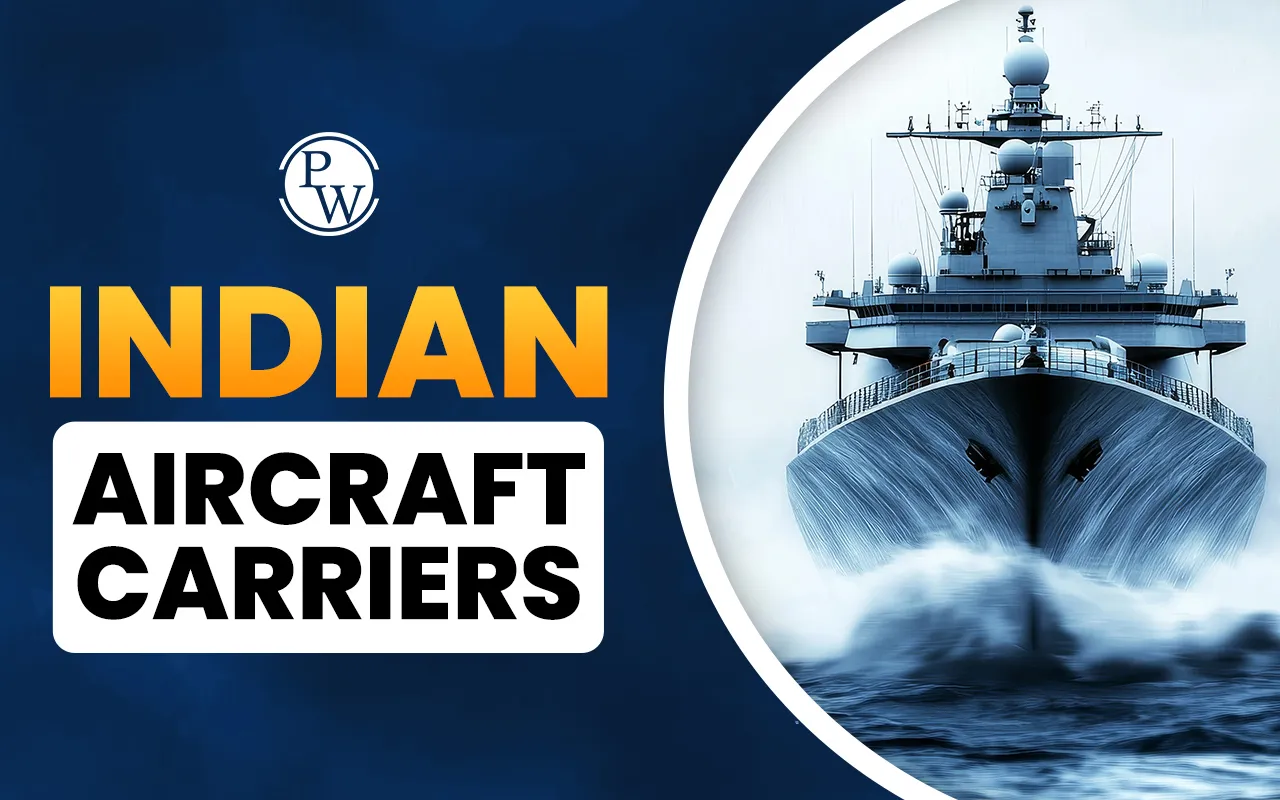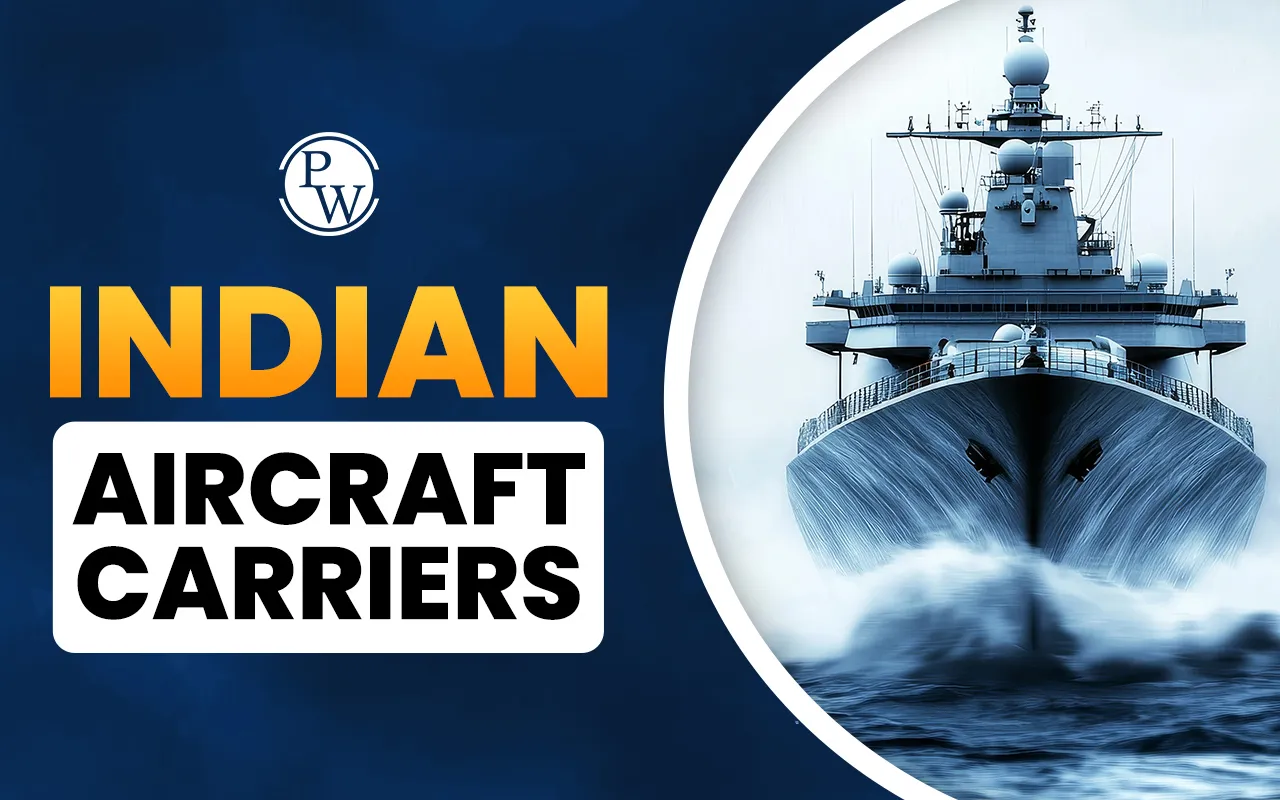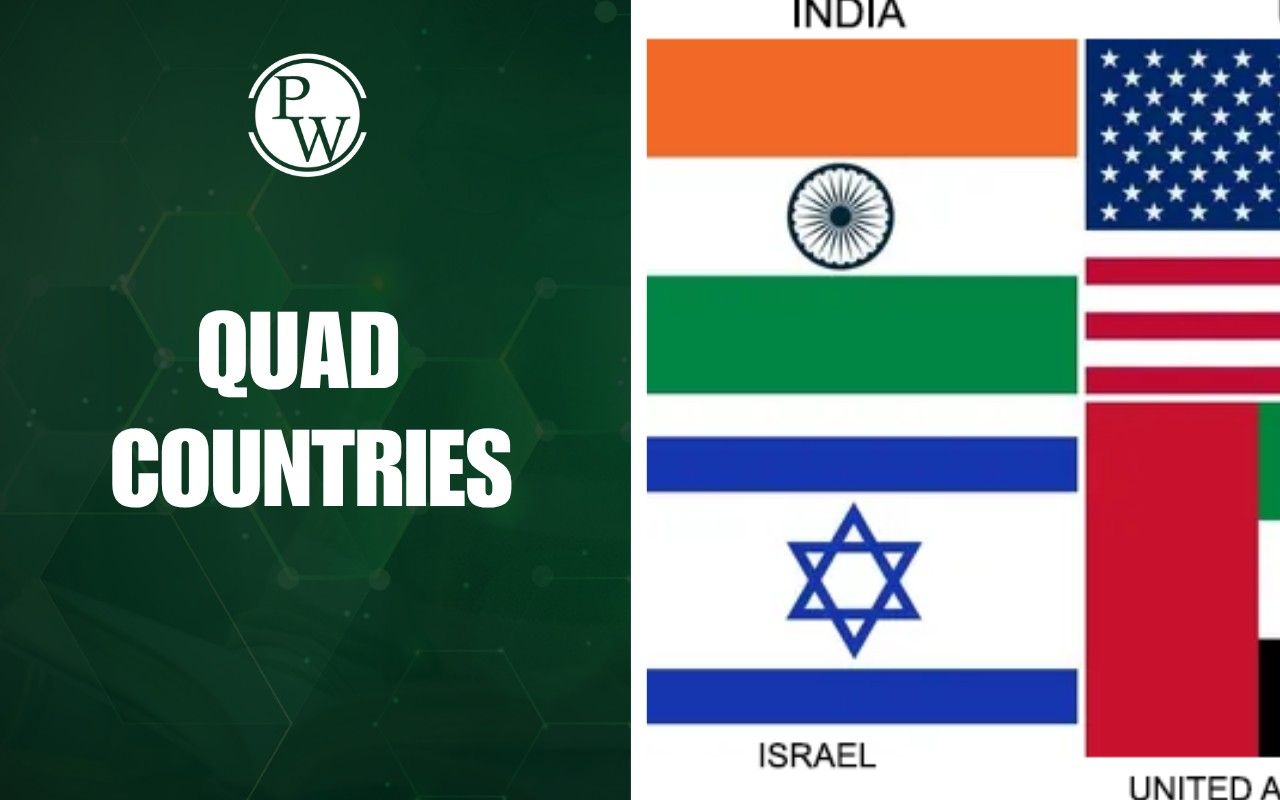

Indian aircraft carriers are large naval ships capable of carrying, launching, and recovering aircraft at sea. These vessels allow India to project air power in the vast Indian Ocean Region. Indian aircraft carriers enhance the Indian Navy's ability to conduct air operations far from land, providing a strategic advantage in both combat and humanitarian missions. Find the list here!
What are Indian Aircraft Carriers?
Since independence, India has prioritised building a strong naval force. The journey began with the first aircraft carrier of India, INS Vikrant (R11), which played a key role in the 1971 war. Over the years, India has added several carriers like INS Viraat and INS Vikramaditya, each bringing in more capability.
Indian aircraft carriers provide mobility, surveillance, sea control, and support in war and peacetime. They are equipped with high-end technology, including fighter jets, helicopters, and advanced radar systems. Here is a glimpse of India’s aircraft carriers:
| Carrier Name | Aircraft Capacity | Displacement | Top Speed | Key Aircraft Onboard |
| INS Vikrant (R11) | 23 aircraft | 19,500 tonnes | 25 knots | Sea Hawk, Alizé |
| INS Viraat | 30 aircraft | 28,700 tonnes | 28 knots | Sea Harrier |
| INS Vikramaditya | 30+ aircraft | 45,000 tonnes | 30 knots | MiG-29K, Kamov-31 |
| INS Vikrant (IAC-1) | 30 aircraft | 45,000 tonnes | 28 knots | MiG-29K, MH-60R, ALH |
| INS Vishal (IAC-2) | Under development/40+ | ~65,000 tonnes | Planned (late 2020s/2030s) | CATOBAR/EMALS launch system |
List of Indian Aircraft Carriers
India has operated several aircraft carriers over the years. Here’s a list of the most notable ones:
INS Vikrant (R11) – First Aircraft Carrier of India
-
Commissioned: 1961
-
Origin: Purchased from the UK
-
Role: Participated in the 1971 war
-
Decommissioned: 1997
Credit: PIB
INS Vikrant was India’s first aircraft carrier. It was launched in 1945 and joined the Indian Navy in 1961. This carrier played an important role in India’s early maritime history and helped establish India as a blue water navy. INS Vikrant was instrumental in the 1971 war with Pakistan, attacking enemy targets and blockading ports.
INS Viraat
-
Commissioned: 1987
-
Origin: Formerly HMS Hermes of the British Royal Navy
-
Role: Peacekeeping in Sri Lanka, Operation Vijay, Kargil War
-
Decommissioned: 2017
Credit: PIB
INS Viraat was India’s second aircraft carrier. Originally built for Britain as HMS Hermes, India acquired her in 1986. INS Viraat served the Indian Navy for over 30 years, from 1987 to 2017. It took part in several exercises and operations, including Operation Vijay and Operation Parakram.
INS Vikramaditya
-
Commissioned: 2013
-
Origin: Russia (formerly Admiral Gorshkov)
-
Role: Modern carrier with MiG-29K fighters
Credit: PIB
INS Vikramaditya was commissioned into the Indian Navy in 2013. It is one of the largest warships in India, capable of operating fighter jets like MiG-29K, helicopters, and more. It enhances India’s maritime power with advanced technology and a versatile aircraft complement.
INS Vikrant (IAC-1) – First Indigenous Aircraft Carrier of India
-
Commissioned: 2022
-
Feature: Designed and built in India
-
Role: Showcasing self-reliance and modern maritime strength
Credit: PIB
INS Vikrant (IAC-1) is a symbol of India’s shipbuilding capability, built by Cochin Shipyard Ltd. It includes over 76% indigenous components and can operate up to 30 aircraft, including MiG-29K, MH-60R helicopters, and Light Combat Aircraft (Navy).
INS Vishal (Under Consideration)
-
Status: Proposed
-
Expected Capacity: Over 65,000 tonnes displacement and 40+ aircraft capacity.
-
Role: Next-generation nuclear-powered aircraft carrier
INS Vishal aircraft carrier is expected to be India’s next big leap in naval power. Though under planning, it could be nuclear-powered, featuring advanced launch systems (CATOBAR/EMALS) and greater aircraft capacity. It aims to further boost India’s power projection in the Indian Ocean and beyond.
Strategic Importance of Indian Aircraft Carriers
Indian aircraft carriers hold great strategic importance for several reasons:
-
Securing Sea Lanes: Aircraft carriers help India safeguard crucial maritime routes in the Indian Ocean, ensuring uninterrupted trade and countering threats like piracy.
-
Enhanced Military Reach: They enable rapid deployment of air assets, boosting India’s ability to respond swiftly to regional threats or emergencies.
-
Strategic Power Projection: Platforms like INS Vikrant and INS Vikramaditya allow India to operate far from its shores and support international missions.
-
Strengthening Naval Diplomacy: Carriers facilitate joint exercises and maritime cooperation, enhancing defense ties with partner nations.
-
Showcasing Self-Reliance: Indigenous carriers reflect India’s technological progress and aspiration to be a major maritime force.
In conclusion, Indian aircraft carriers are crucial assets for India’s navy. With a rich history and ongoing development of new carriers like INS Vikrant and INS Vishal, India is securing a prominent place among the world’s naval powers.
Explore more about India’s defence capabilities with UPSC courses by Physics Wallah!
Indian Aircraft Carriers FAQs
What was the first aircraft carrier of India?
Which is the first indigenous aircraft carrier of India?
What are the main capabilities of Indian aircraft carriers?
What is the role of aircraft carriers in the Indian Navy?
What is INS Vishal aircraft carrier?

UPSC Coaching












